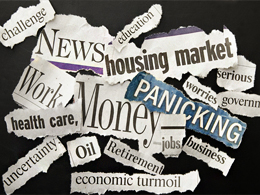 Today’s post will be a short one for two reasons. First, Commonwealth’s Massachusetts office is closed due to the snowstorm slamming New England.
Today’s post will be a short one for two reasons. First, Commonwealth’s Massachusetts office is closed due to the snowstorm slamming New England.
Second, of course, is because my home, my family, and I are about to be crushed by the oncoming glaciers. So I hear, anyway.
Every winter I enjoy the moderate, reasoned, informative coverage of snowstorms by the local media. Glaciers pushing Boston into the sea, mass starvation, cannibalism, the living envying the dead—all make their regular appearance in the storm report. Then the snow falls, we shovel out, and everyone returns to their regular lives, all the better for our brief brush with catastrophe.
One of my colleagues put it well on Facebook last night: “Just glanced in my fridge and realized, to my horror, that we’re down to two half-gallons of milk . . . I’ll be dead by 11:00 A.M. tomorrow.” (Thanks, Scott.)
Why are we in constant crisis mode?
The media, of course, are only doing their job, which involves attracting viewers and selling ads, not just informing the public. As “clickbait” content becomes increasingly prevalent online—cat pictures, anyone?—the competition to attract viewers is driving greater sensationalism in the news media as well.
Or maybe not, as I seem to remember this type of weather coverage many years ago. Perhaps it’s simply the nature of the beast to be as dramatic as possible. And that tendency might be bleeding over into coverage of economic and financial events as well.
Every week, it seems, we have a new crisis, with the reporting inevitably tilting toward the negative. Every week, I see “news” posts about the U.S. dollar’s imminent collapse. Wait a second . . . that was last year. Now the posts are warning that the dollar is so strong it will derail the economy.
The important thing is that disaster is coming—soon!—so you have to click and see our ads. Whoops, I mean story.
Cutting through the hype
One of my goals with this blog is to cut through some of the attention-seeking hype and to identify rules that tell us when we need to pay attention. My monthly risk factor update is an example of that, as is the 200-day moving average rule for the stock market.
There are certainly things we need to worry about, but they’re not necessarily what the media focuses on. Let’s be thoughtful in our concern and calm in our responses. This is how we can best serve ourselves, our families, and our communities.
That said, there is 18 inches of snow outside today. Time to go out and serve with my snowblower. I hope you and your families are warm and safe, and that you ride out the storm with a minimum of inconvenience.


 Print
Print


